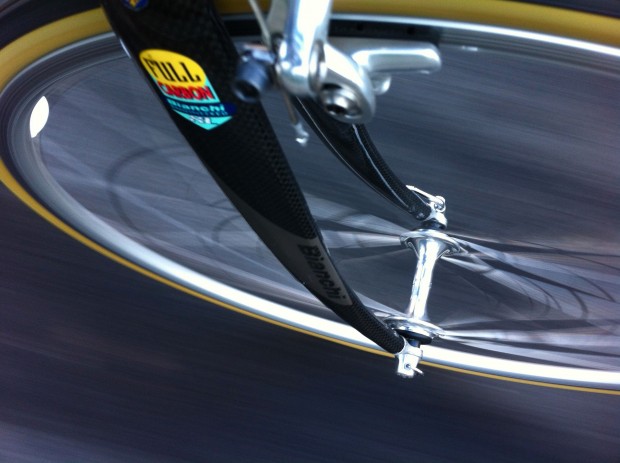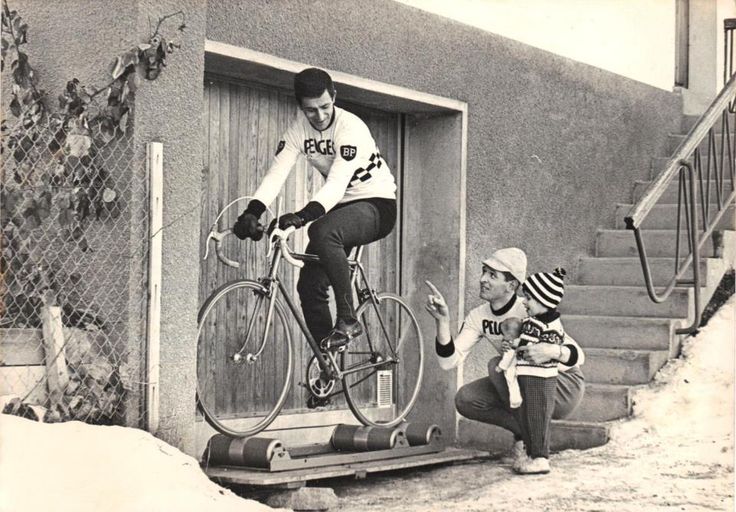Peer Pressure

Eight point V bar. From the moment I bought my first set of high quality road clinchers, I’ve ridden at that pressure. I started with that number because that’s the pressure the sidewall told me to pump them up to; I didn’t yet understand much about balancing the benefits of high and low pressures to optimize comfort and friction; I just pumped them up as instructed and off I went merrily down the road.
I’m not as thin as I’d like to be, which is the same thing as saying I’m fatter than I should be, though I certainly hope I climb well for my weight, especially as my third (and hopefully charmed) ascent up Haleakala is looming large in Vajanuary. The point is, I’m not a whippet and even if I starved myself for the next five months and subsist exclusively on IPAs (I draw the line at cutting beer out of my theoretical diet; I might get desperate, but I’m no savage) I’d still be an Eros Poli at best. Being a big guy, the only factor that mattered to me when it came to tire pressure was avoiding the pinch flats that plagued me during my time riding cheaper tires and that meant maximum pressure, no questions asked.
We always dialed our pressure in for Mountain biking and would pull a few pounds out of our road tires when riding in the rain, but by and large, tire pressure was tire pressure, and as far as I was concerned, more was better. I even had a set of 20mm tires on a makeshift TT bike I had that I blew up to a whopping 10 bar. In the last few years, however, the Cycling world has become obsessed with doing the limbo and seeing how low they can go on tire pressure. It all began with an article in Bicycle Quarterly which conducted an extensive and flawed study on the effects of tire pressure and tire width, and concluded that lower pressure and wider tires are faster and more comfortable than high pressure, narrow tires; the idea is that lower pressure allows small bumps to be absorbed by the tire rather than bouncing the bicycle (and rider) in the air, and that wide tires flex more efficiently than narrow tires resulting in lower rolling resistance. Its important to remember that this gain in comfort and efficiency also comes with an increased risk of pinch flats.
This is all well and good, of course, though we always have to be careful to remember the basic principles of such a compromise; lower pressure and wider tires also mean an enlarged surface area which necessarily means more friction; a perfectly hard, narrow tire on a perfectly smooth surface would have almost zero friction, to the point that you’d be unable to gain enough traction to actually move the bicycle at all. What we’re after, in a practical sense, is a balance between the two extremes which optimizes comfort and tire efficiency against reduced surface area and the risk of pinch flats.
I became infected with Tire Pressure Fever myself as the Cycling world became increasingly obsessed with tire pressure. Down went the pressure in my tires and immediately I felt sluggish and lethargic on the bike. Climbing out of the saddle, I could feel the tires flex as I unleashed the Awesome Devastation of the Toothpicks of Navarone. Cornering was like steering in molasses; turn the bars, weight the pedals and then wait a few moments while the bike got round to responding.
These observations first had me reaching for the pump and then got me theorizing about what is really going on with tire pressure and what pressure is right for a given rider. I say “theorizing”, but most other people would use something closer to “guessing assertively”. But that doesn’t mean I’m wrong.
Basically, it comes down to finding the highest pressure and narrowest tire you can that gives a rider of your weight the right amount of tire flex such that your bike isn’t bouncing as it rolls over the tarmac and allows it to roll efficiently, all while minimizing surface area, risk of punctures, and sidewall deformation when accelerating (cornering and climbing are basically the same as accelerating; the acceleration vector is just in some other direction than forward.) This means that each rider at each weight with different preferences on the sliding scale between the above compromises will find a different optimal pressure. Impressed by Tom Boonen’s tire pressure at Roubaix? Tread carefully; that pressure was dialed in based on very specific criteria and unless you’re eating the same cobbles and weigh the same as he does, you’ll need a different pressure to find the same balance. Bicycle Quarterly has a chart that shows what they believe to be the ideal pressure by rider weight, though I don’t believe a word of it; I do however entertain the possibility that I could be missing something based on the fact that I didn’t actually read the article.
Me? I’m still happily riding at 8 point V. I’m comfortable, I’m not flatting, and I’ve got good control. Besides, it just has a nice ring to it.

